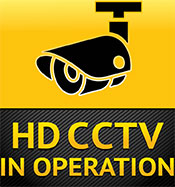
Prospecting the HD Market
IP camera-based system is leading the industry
 When we reflect on the history of CCTV, we can see from NTSC/ PAL standard classification that the development of the technology is closely related to broadcasting standards and technologies. The recent trend of increasing demands for high-definition, video surveillance also is connected to the acceleration of HDTV’s popularity all over the world.
When we reflect on the history of CCTV, we can see from NTSC/ PAL standard classification that the development of the technology is closely related to broadcasting standards and technologies. The recent trend of increasing demands for high-definition, video surveillance also is connected to the acceleration of HDTV’s popularity all over the world.
At present, the most widely used method to get high-definition video into the CCTV market is through an IP-based, camera system that compresses video and transmits it through a network using the TCP/UDP protocol.
Even though the product release of HD-CCTV is based on HD-SDI transmission technology, it has been rapidly increasing since the beginning of 2012. There has not been enough marketing about HDCCTV and its technology and products, so only the future will tell the tale.
What is HD-SDI, HD-CCTV?
HD-CCTV is an acronym for “high-definition CCTV” products that use HD-SDI transmission technology. Completely distinct from conventional analog TV, HD-CCTV is the generic term derived from conventional CCTV.
High-definition, serial digital interface (HD-SDI) is an advanced technology for video transmission developed to ensure transmission among HD cameras, recording equipment and monitors used in the broadcasting world.
One of the most defining features about HD-SDI is that it can transmit full-HD video through the coaxial cable without video compression. With the release of low-cost, main, chipset solutions, HD-SDI technology was introduced to the CCTV market in 2009, and the technology began appearing in products in 2011.
With HD-SDI, full-HD video is converted to a 1.5 GBps serial digital signal at the camera. This signal is transmitted to the DVR through the coaxial cable and finally displayed to the monitor as a recorded video onto hard disk after video compression. Although the HD-SDI transmission of HD-CCTV products provides high-definition video throughout the process of recording, displaying and playing back in cameras and transmission media, it keeps a similar system design and the same operation methods as conventional analog CCTV.
The Merit of HD-CCTV Compared to IP Camera
Non-compressed video transmission. What is the primary goal of a customer who wants to get highdefinition video surveillance? The answer is probably the best video resolution and quality that cannot be touched by an analog video system. Because HDCCTV uses a non-compressed video source, it provides the highest video quality.
Of course, IP cameras can provide full-HD (1920x1080) or higher resolution, but IP camerabased systems share the same network for multiple cameras, so the camera side should perform video compression to reduce video size despite the video quality degradation.
Low video delay. Because a HD-CCTV system’s HD-SDI transmission uses one-to-one cable between a camera and DVR, there is no interference among video channels, and it does not raise lack-of-transmission bandwidth. Besides, HD-CCTV does not need the encoding process for video compression at the camera side nor the video decoding process at the DVR side. Video delay does not occur through the whole path. When monitoring through an HD-SDI DVR, HD-CCTV shows a similar, video-delay level to an analog CCTV system, considering the overlay process for the DVR’s multi-channel display.
When an operator controls the zoom and focus features of an IP PTZ camera from the remote, video delay between the front-end product and back-end product is difficult to control. Many users who turn to IP camera installation do so because they have a lack of network bandwidth and unstable network traffic, resulting in a loss of video frame rate, which makes it difficult to get a stable video stream. In the case of HDSDI transmission, there could be some inconvenience to build a one-to-one transmission channel, but doing so can provide a highly-reliable video stream.
Compatibility between equipment. HD-CCTV products conform to several standards of the Society of Motion Picture & Television Engineers (SMPTE). The HD-SDI transmission method is one of the SMPTE standards used for broadcasting equipment. The HDcctv Alliance updated some of SMPTE’s standards, especially those involving transmission distance, making it suitable for actual the CCTV market, based on HD-SDI standards. This resulted in the best compatibility among HD-CCTV products. If customers use an HD-SDI repeater and a converter between a HD-SDI and HDMI or a converter between HD and SD, the fiber-optic equipment conforming to the standard will offer no resistence to expanding the existing HD-CCTV system.
In the case of IP cameras, protocol standardization by PSIA and ONVIF has been progressing in recent years and is currently a new integration trend. But, this also shows how much trial and error users undergo, if there is no standard when new technology is introduced. It is important to guarantee the compatibility among equipment through definite standards, when new technology is ready for the market.
Easy system design and intuitive installation by plug and play. HD-CCTV has almost the same system design and installation method as the analog CCTV system. This similarly provides an opportunity for experts of analog CCTV to easily adapt to HD-CCTV, and it means existing analog CCTV systems can easily be upgraded to HD-CCTV systems without deep knowledge of the latest technology. This feature is an important factor for a new technology to rapidly settle down into the market and grow.
HD-CCTV provides easy installation and operation through real plug and play. Even though IP camera installation methods have improved, if a customer cannot get video, it may take a tremendous amount of time and effort to clear the problem. Moreover, when designing a system, it is important to consider the network load and countermeasure for network trouble and security.
The leader of this fast-growing, high-definition, surveillance market is the megapixel IP camera, but this result comes from having no alternative in the market. The recent introduction of HD-CCTV systems is providing intuitive system design, installation, operation and maintenance, all of which are similar to analog CCTV systems. It provides the benefit of noncompressed, video transmission through 1.5 GBps of reliable video transmission, and it is spreading fast in major world markets.
IP cameras received 30 percent of the market share over the past 15 years. Nobody can predict how long it will take for HDCCTV to reach that market share, but everyone expects it to be soon.
This article originally appeared in the March 2013 issue of Security Today.